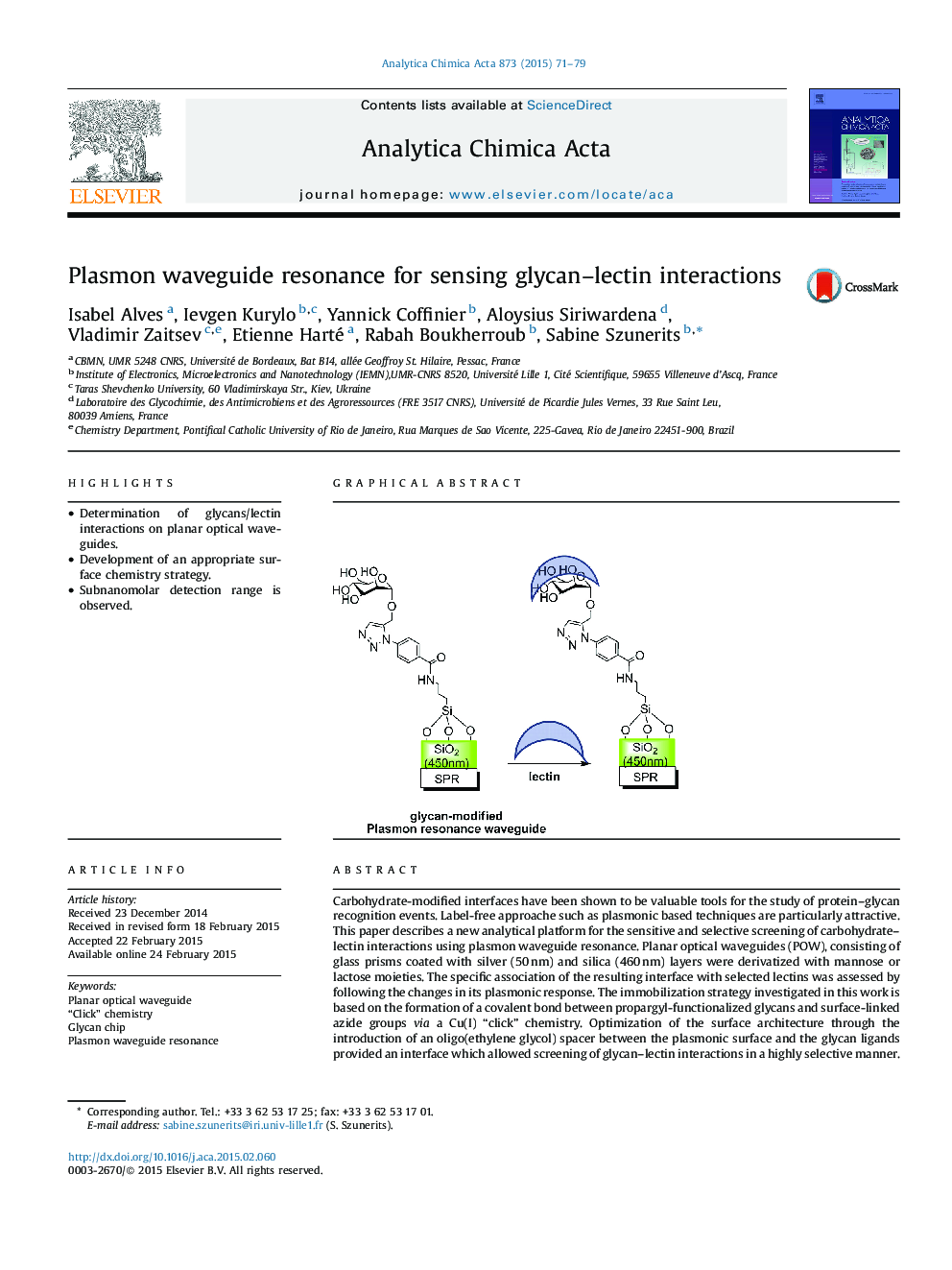| Article ID | Journal | Published Year | Pages | File Type |
|---|---|---|---|---|
| 1163822 | Analytica Chimica Acta | 2015 | 9 Pages |
•Determination of glycans/lectin interactions on planar optical waveguides.•Development of an appropriate surface chemistry strategy.•Subnanomolar detection range is observed.
Carbohydrate-modified interfaces have been shown to be valuable tools for the study of protein–glycan recognition events. Label-free approache such as plasmonic based techniques are particularly attractive. This paper describes a new analytical platform for the sensitive and selective screening of carbohydrate–lectin interactions using plasmon waveguide resonance. Planar optical waveguides (POW), consisting of glass prisms coated with silver (50 nm) and silica (460 nm) layers were derivatized with mannose or lactose moieties. The specific association of the resulting interface with selected lectins was assessed by following the changes in its plasmonic response. The immobilization strategy investigated in this work is based on the formation of a covalent bond between propargyl-functionalized glycans and surface-linked azide groups via a Cu(I) “click” chemistry. Optimization of the surface architecture through the introduction of an oligo(ethylene glycol) spacer between the plasmonic surface and the glycan ligands provided an interface which allowed screening of glycan–lectin interactions in a highly selective manner. The limit of detection (LOD) of this method for this particular application was found to be in the subnanomolar range (0.5 nM), showing it to constitute a promising analytical platform for future development and use in a pharmaceutical or biomedical setting.
Graphical abstractFigure optionsDownload full-size imageDownload as PowerPoint slide
